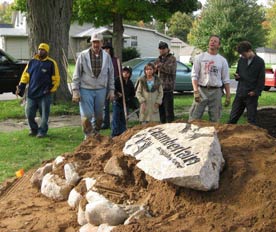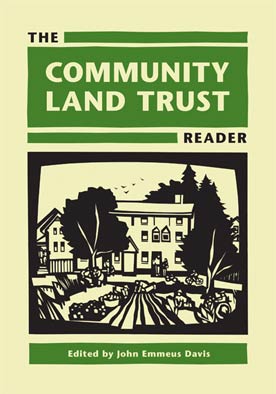A proud and noble tradition in the United States, born out of the work of Saul Alinsky and the migrant workers who gathered in Chicago’s Back of Yards, organizing is still a fledgling activity in the UK. Indeed, I had wondered if I would even find anyone doing it. Our labor movement has, until recently at least, stood as a proud pillar of achievement within British civil society, and through the Church of England (historically at least) religion has never been short of a say on matters of the state. But to my great delight, I stumbled across the work of London CITIZENS — a broad-based alliance of over 150 member institutions across the capital who seek to bring together schools, unions, churches, mosques, and working people of all creeds to fight for the common good. They only had one job going: a one-day-a-week post for a housing organizer.
The chronic state of the British housing market differs greatly from the United States’ in a number of very important ways. First, its regulation has for a very long time been seen as a primary duty of the state. A Royal Commission (a major government public inquiry) as far back as 1885 led to the fantastically titled “Housing of the Working Classes Act of 1890,” which first encouraged local authorities to take responsibility to improve the local housing. As a consequence of this, the London County Council opened the Boundary Estate in 1900, and many local councils soon after began building similar state-subsidized flats and “council houses.”
World War II saw both the destruction and dereliction of over four million homes across the UK. But true to the spirit of the age, and lacking both the necessary resources and the cultural assurance to justify the use of its traditional forms, British architecture soon after embarked upon a sociological crusade with the introduction of the New Towns Act of 1946 — a mood paralleled across the formation of the welfare state. Britain was not only to be rebuilt — it was to be reconceived. In the immediate postwar years, and well into the 1950s, council house provision spiraled, with vast sprawling council estates emerging on the outskirts of cities, forming what were set to be functional, even “brutalist,” embodiments of a new standard of living.
Decades of underinvestment followed. Social policy economists such as Anthony Culyer and Nicolas Barr have argued that the role council housing plays in the UK has only helped to keep the poor poor: it can hurt labor mobility through the way in which it allocates housing according to districts; through a combination of security of tenure and affordable rent, it gives little incentive to tenants to become upwardly mobile; and it struggles to incentivize families to downsize from large accommodations after their children have moved out, creating a shortage the state could never provide for. But above all else, the sector has been starved. Then, in the glorious era of 1980s Britain, Prime Minister Margaret Thatcher introduced “Right to Buy” legislation, whereby council tenants could buy their house from the local council at a knock down rate.
Homeownership grew from 55 percent of the population in 1980 to 64 percent in 1987. By the time Thatcher left office in 1990 it was 67 percent. The number of public houses being built diminished too: down from 170,000 in the mid-1970s to less than 35,000 in 1990. In total, by 1995, 2.1 million homes had been acquired under the Right to Buy. Plaudits described it as the greatest redistribution of wealth and power from the state to the people since the Magna Carta. In reality, one generation of homeowners made off like bandits, bankrupting their children in an age that now has come.





Comments